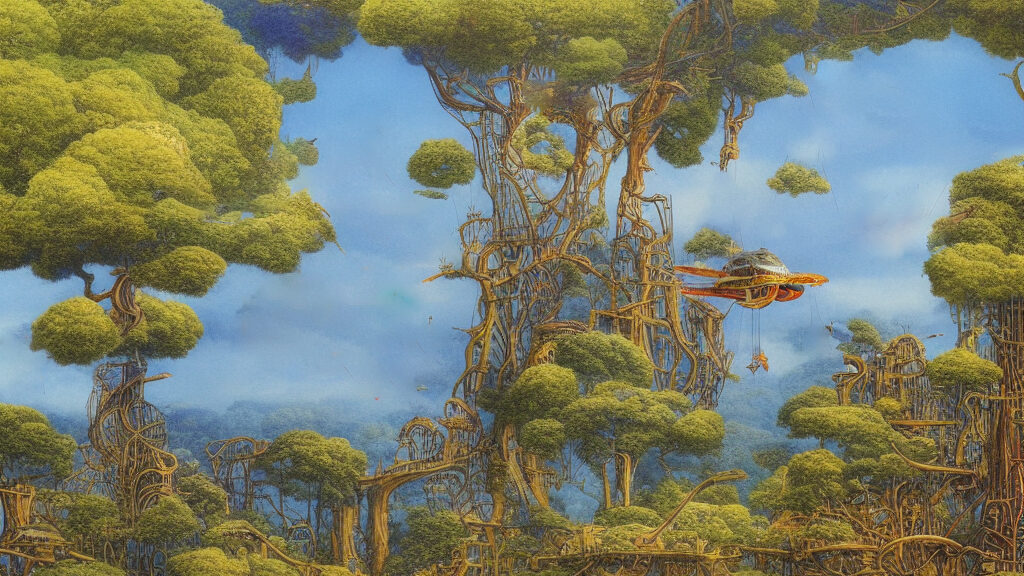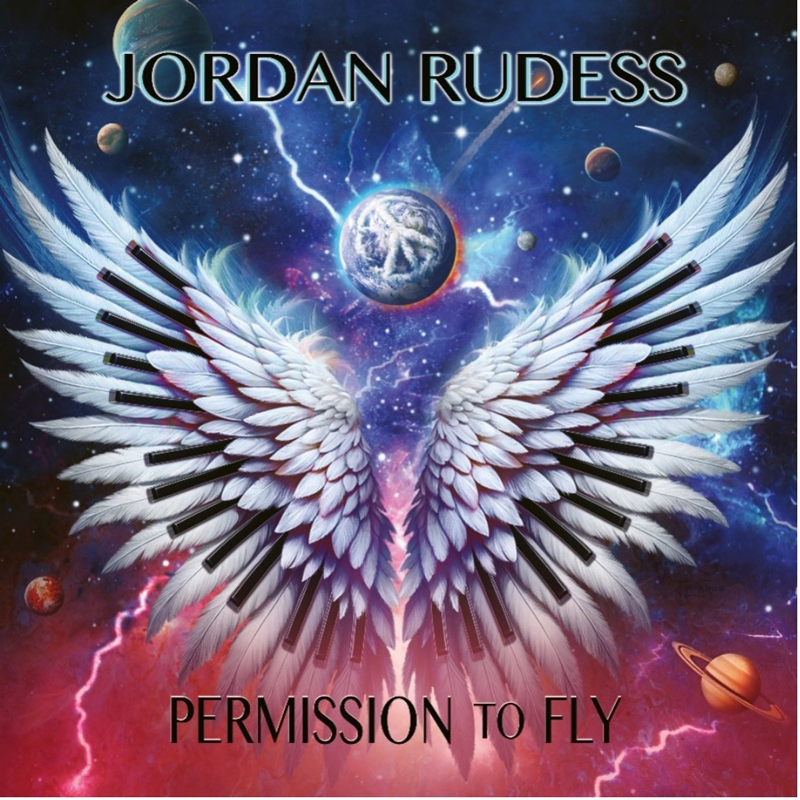Jordan Rudess – Permission to Fly (InsideOutMusic, 2024)
Jordan Rudess, the ever-evolving keyboard wizard, is back with Permission to Fly, a solo album that epitomizes his relentless pursuit of innovation. The album captures the intricate essence of human existence, colored by the turbulent events of 2023-2024. Rudess himself describes the project as being deeply influenced by these tumultuous times, with a central theme of peace and anti-violence permeating many of the tracks.
The album opens with the electrifying “The Final Threshold,” a piece that pulsates with an Emersonian energy, instantly positioning Rudess as one of the foremost progressive rock keyboardists of his generation. The track’s organ-driven intensity sets a high bar, combining technical expertise with emotional depth.
Track two, “Into the Lair,” is a grandiose epic that features majestic vocals reminiscent of The Enid, a fitting comparison given the presence of Joe Payne, former member of the British symphonic rock band The Enid. The song features dazzling synth solos and lush symphonic arrangements, though it slightly falters with a prog-metal riff near the end that feels more exhausting than exhilarating.
“Haunted Reverie,” the third track, continues the album’s exploration of haunting beauty, combining exquisite vocal harmonies with Rudess’s formidable keyboard work. Moreover, this track also features some of the album’s most captivating guitar work.
“The Alchemist,” the fourth track, bursts forth with a high-energy synth intro, weaving through intricate harmonies and serpentine vocals that draw from both Western classical and jazz traditions. The track’s dynamic range and spectacular synth solos lead to a powerful, epic conclusion.
“Embers” follows as the fifth track, a radio-friendly ballad that balances accessibility with depth. Piano, drums, and orchestral synths support finely crafted choruses, making it one of the album’s more commercially appealing offerings.
As the album progresses, track six, “Shadows of the Moon,” begins with a soft rock sensibility before Rudess injects a brilliant synth solo, guiding the music to a stirring crescendo.
“Eternal,” the seventh track, shifts gears with a heavy metal opening, evoking the early days of Black Sabbath as if they were jamming with a progressive rock keyboardist. The track improves as it moves away from the metal framework, though the metal eventually returns, creating a tiresome tension that both intrigues and challenges the listener.
The album’s penultimate track, “Footsteps in the Snow,” offers another poignant ballad, rich with emotion and delicate instrumentation.
Permission to Fly concludes with the magnificent “Dreamer,” a cinematic orchestral keyboard instrumental that leaves a lasting impression.
The album’s conception began after Dream Theater’s DreamSonic tour wrapped up in the summer of 2023. With the band set to return to the studio in 2024, Rudess seized the fall to dive into his solo endeavor. He reflects on the creative process as vital to his emotional well-being, emphasizing how music serves as a conduit for his self-expression. The drive to create, whether through piano compositions or larger projects like this, is as essential to him as breathing.
“Making music is as vital to me as air. Whether it’s composing piano pieces or embarking on more elaborate projects like this album, the act of creation plays a critical role in my emotional processing and self-expression. Once I immerse myself in a new project, the inspiration flows, and I’m reminded of the satisfaction that comes from bringing musical ideas to life.”
Unlike some of his previous releases, which were true solo efforts, Permission to Fly saw Rudess assembling a core group of musicians to elevate his vision. Among them is drummer Darby Todd, whom Rudess met during the DreamSonic tour. Todd, known for his work with Devin Townsend, brought a wealth of experience across genres, contributing a dynamic and versatile rhythm to the album. Rudess highlights the importance of finding the right collaborators, noting that Todd’s technical skill and genuine personality made him the perfect fit.
“It was during the DreamSonic tour that I met Darby Todd for the first time. He was drumming for Devin Townsend, and we hit it off immediately. At that point, I wasn’t thinking about my own album, but when I finally had some time off the road, I considered who I wanted to play drums, and Darby seemed like the natural choice. Finding someone with whom I could truly connect was essential. With a diverse studio background and experience across different genres, Darby brings a lot to the table. He’s talented, diligent, and efficient, and more importantly a genuinely wonderful person who is a pleasure to collaborate with.”
Vocals were another critical element that Rudess carefully curated. After considering several options, he discovered That Joe Payne, a vocalist whose sound and musicality instantly resonated with him. Rudess praises Payne for not only meeting but exceeding his expectations, particularly in navigating the complex vocal harmonies and arrangements that the album demanded. Payne’s contribution was so significant that Rudess considers him a core element of the project.
“A colleague suggested that I check out the vocalist That Joe Payne. I didn’t know anything about Joe at the time, but I listened to some of his work and was captivated by his sound and musicality. We got on a Zoom call and hit it off right away. I just knew that he was the vocalist for this album. I sent Joe an early cut of a song, and when he sent back his recordings, I was blown away. Navigating the balancing act between my various projects is always a juggle, and I was initially a bit concerned about handling the vocal harmonies and arrangements, especially with my upcoming commitments with Dream Theater. Joe not only figured out the harmonies, but also devised really impressive vocal arrangements. He went beyond my expectations, and has been a totally indispensable asset to this project.”
Guitar work on the album also received special attention. While Rudess initially used keyboard-generated guitar sounds, he ultimately decided that live guitar would bring a richer texture to the music. He enlisted Steve Dadaian, a world-class guitarist with whom Rudess shares a close friendship. Dadaian’s electric and acoustic guitar work added a new dimension to the album, enhancing its depth. Additionally, the Chilean guitarist contributed key solos on tracks like “Embers” and “Into the Lair,” highlighting his phenomenal talent.
The lyrics on Permission to Fly were written by Rudess’ daughter, Ariana. Although not a professional musician, Ariana’s lifelong immersion in her father’s music equipped her with an innate understanding of his artistic instincts. Her lyrical contributions added a profound and cerebral layer to the album, resonating deeply with its overarching themes.
In a unique move, Rudess partnered with Moises.ai for the album’s first single, “Embers.” This AI-powered platform allows fans to download the track and create their own versions by playing along, offering an interactive experience that aligns with Rudess’ innovative spirit.
Buy Permission to Fly.

